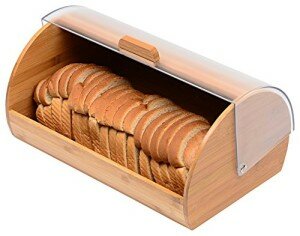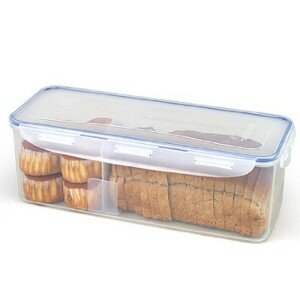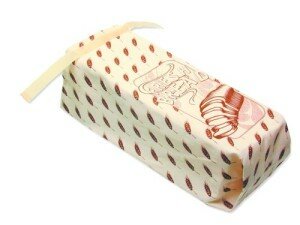When you just start to bake your own bread there is a great chance that there won’t be much left at the end of the day, simply because it is so delicious to serve freshly baked bread.
However, once bread making becomes a natural part of your everyday life, then leftovers might start to appear.
So what do you do with the leftovers?
Some people make the mistake of storing bread in the fridge. However, this is not a good idea as it will strip the bread of moist and leave you with some dry, chewy leftovers after a short time in the fridge.
The best thing you can do is to store your bread in a suitable type of bread storage. The purpose is to keep the bread fresh for as long as possible, but it is also important to protect the bread from possible threats like flies, insects or mice. There are several different options that you can choose between.
- Breadbox. A breadbox is a good choice. A breadbox is a storage container that you can use to store bread and other baked goods. It is usually placed on the counter top where you have easy access to bread all day long. It keeps the bread from going stale too fast. The breadbox allows you to store your homemade bread at room temperature which will delay the process of decay. The lid of the breadbox is loose which allows an airflow that reduces condensation. This means that the process of creating mold is delayed. A breadbox is usually made from plastic, but it is also possible to find wooden breadboxes, as well as breadboxes made from metal or pottery.
- Bread storage container. There are other types of bread storage containers that are made specifically with the purpose of keeping bread fresh for as long as possible. Tupperware or Lock & Lock are good example of airtight bread storage containers. They are good for smaller loaves of bread or just for leftovers.
- Bread Bags. There are many different types of bread bags that can be used to store homemade bread. Plastic bags can be used for breads with a softer crust. If you store a crispy bread with a hard crust in a plastic bag it will go soft really fast. Bread with a hard crust can be stored in a paper bag or a linen bag. Linen bags are good as they can be used again and again and they allow an airflow, where plastic bags can produce condensation.
Another good way to keep bread fresh is to freeze it as soon as possible. The faster you freeze the bread the more fresh it will be when you defrost it. You can freeze bread in plastic zip-lock bags or in containers like Tupperware. Let the bread defrost at room temperature and perhaps heat it a little before serving.


